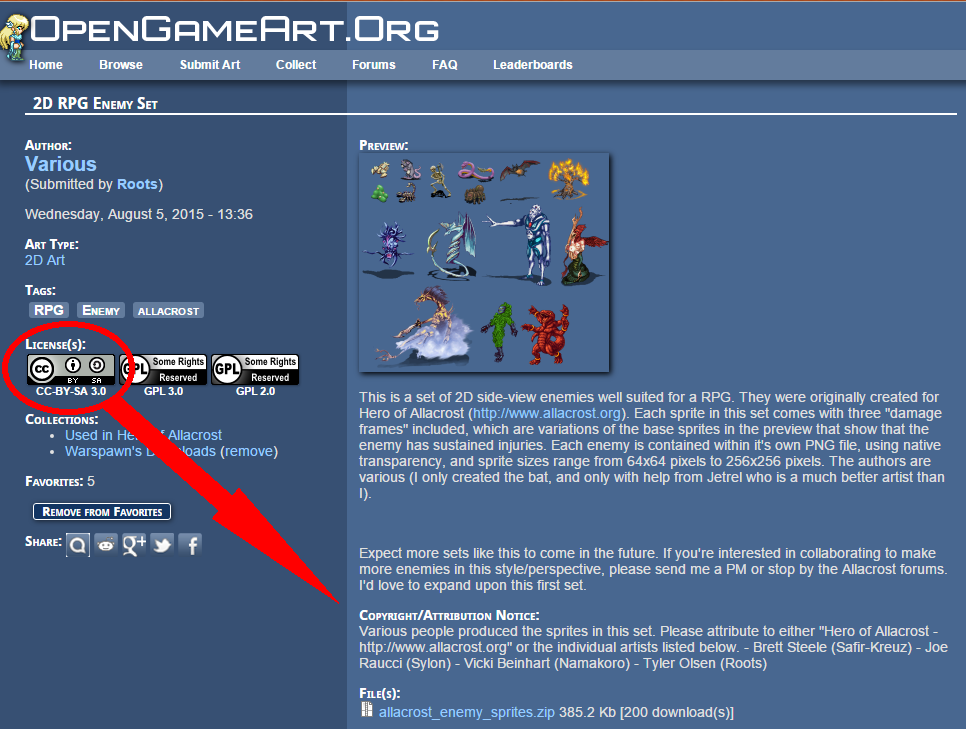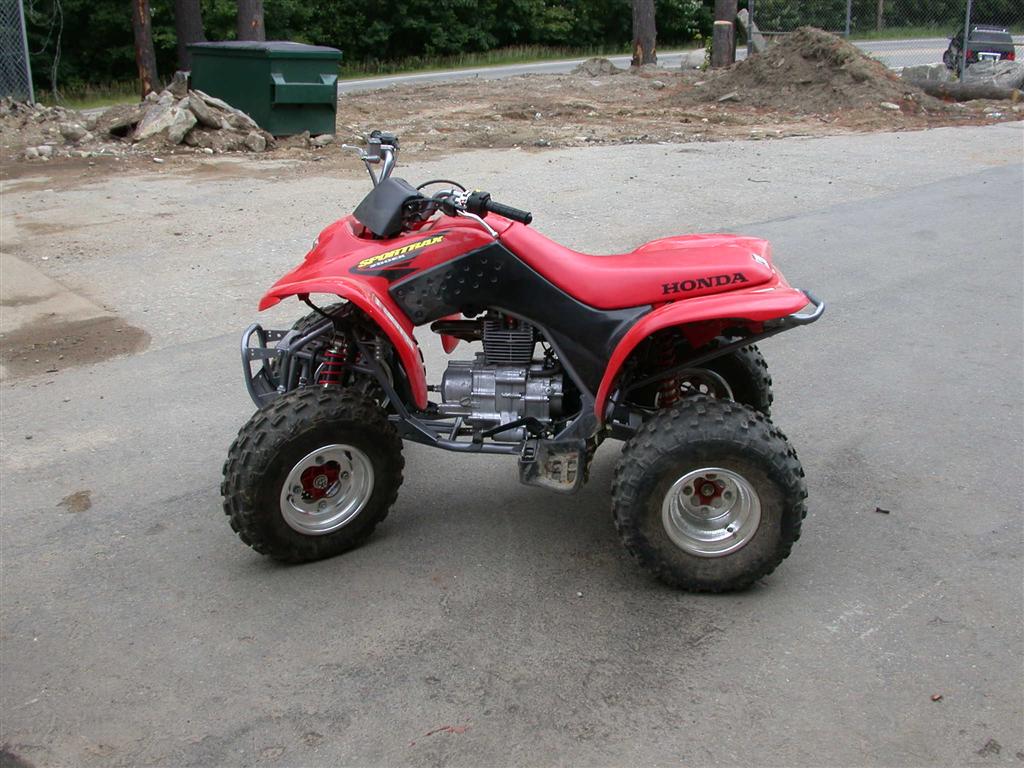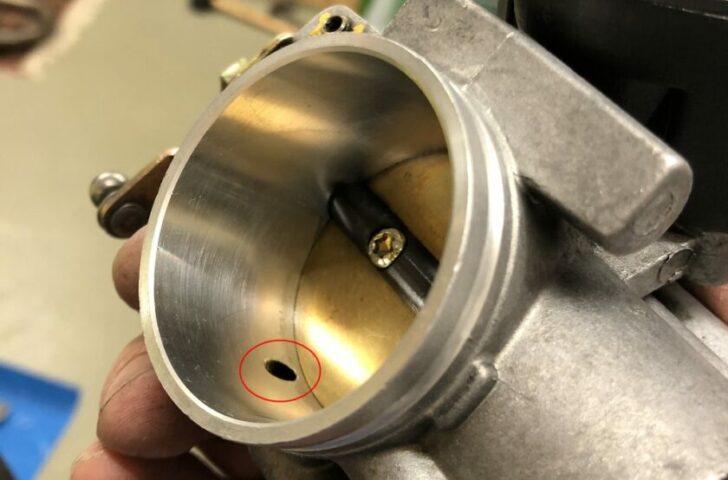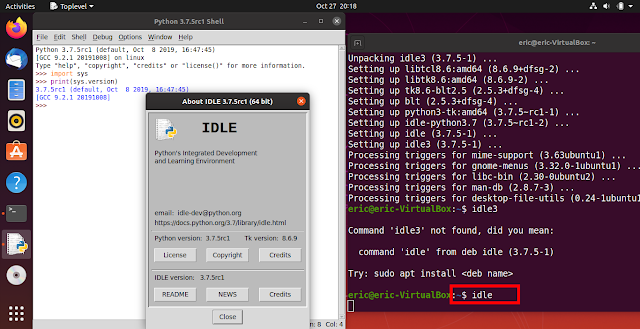Incorrect idle adjustment on your ATV can lead to all sorts of issues. If the idle is set too low, the engine may stall and struggle to stay running. On the other hand, an idle set too high causes premature drive belt wear, shifting may become difficult, and you may even experience unwanted vehicle movement.
Keep reading to learn how to get your ATV to idle correctly for optimal vehicle performance.
An ATV is running idle when the engine is turning slowly, at no load, with no throttle applied, and usually out of gear.
Too high idle is when the engine turns faster at idle than recommended (higher RPMs).
Too low idle is when the engine turns slower at isle than recommended (lower RPMs).
Please note that improper adjustment is just one of several possible causes when your ATV is idling too high or too low:
Related: How to Know if the Gas in Your ATV Is Bad or Not
If you’re unable to get the idle to where you want it by adjustment only, these are the most common culprits. Troubleshooting and fixing these issues will be covered in a separate post.
The correct engine speed an ATV should idle at varies, but most ATVs should idle somewhere between 1100 to 1700 RPM.
Engine size, year of manufacturing, brand, carb style, and whether it’s a two-stroke or four-stroke are all factors that play a role when determining the correct idle speed.
Please refer to the owner’s manual for your specific ATV’s exact engine idle speed.
The idle adjustment is not the same in all ATVs. Some bikes, typically budget models or older ATVs, can be easily adjusted at home. Newer and more advanced models may require help from a trained mechanic with access to special tools.
Follow the steps below to adjust the idle on a carbureted ATV by adjusting the idle screw.
The engine needs to be at operating temperature to adjust the idle properly. Adjusting the idle when the idle is cold can lead to poor idling when the engine warms up.
Some ATVs are designed to run at a slightly higher idle when the engine is cold before it settles down automatically after a few minutes when the engine has had time to warm up. Adjusting the idle in the cold-start phase will cause the idle to drop too low when the engine heats up.
The idle adjustment screw is located on the carburetor. On most ATVs, the carb is readily accessible, but you may need to remove a plastic cover on some models.
The adjustment screw is usually on either side, but it can also be at the front of the carb. Look for a brass-colored screw designed to be adjusted with a Phillips or flat-head screwdriver.
Reaching the screw with the screwdriver may be a bit fiddly. It helps to identify the best access angle and have the correct length screwdriver before you begin the actual adjustment.
It helps to identify the best access angle and have the correct length screwdriver before you begin the actual adjustment.
To know if the idle needs adjusting, whether it needs to be changed up or down, or when you’ve achieved the correct idle, you need a way of determining the engine RPMs (Revolutions Per Minute).
 Note that this is a job that requires mechanical skills slightly above average.
Note that this is a job that requires mechanical skills slightly above average. Adjust the idle by turning the idle screw in or out depending on whether you’re looking to raise or lower the idle:
If your ATV has a tachometer, turn the screw slowly until the gauge displays the correct RPM specified by the manufacturer.
If you’re adjusting by ear, turn the screw slowly clockwise until you begin hearing signs of engine stalling, such as popping or stuttering. As soon as these symptoms occur, turn the idle adjustment screw half a turn clockwise to increase the RPM slightly. The engine should now be idling smoothly with no signs of stopping.
The engine should now be idling smoothly with no signs of stopping.
This is how you adjust the idle on an ATV with an adjustable throttle cable. The same steps apply whether the ATV is carbureted or fuel injected.
Any time you’re making adjustments that affect idling, you need to ensure the engine is at operating temperature for the best results. Please refer to step 1 above.
Older ATVs, budget-friendly models, and most youth ATVs use a mechanical steel cable to transfer movement from the thumb throttle and down to the carburetor. The cable should move freely inside a protective sleeve that s held in place at both ends.
You’ll find an adjustment mechanism at either end of the throttle cable assembly. When adjusted, it will affect the bike’s idle.
On most ATVs with a throttle cable, the adjuster is located up by the thumb throttle, usually covered by a rubber grommet.
Pull back the rubber grommet by hand to reveal the adjustment mechanism. You may need to use a screwdriver to pry the rubber back in some cases.
A locking nut, also called a jam-nut, secures the adjustment screw. When tightened, this nut prevents the adjustment screw from unwanted movement.
Usually, the locking nut can be loosened by hand. Alternatively, you need to use the correct size wrench to get it loose.
Bring the locking nut a few rounds of thread back to allow free movement in the locking nut.
Just as when adjusting the idle by making adjustments directly to the idle screw located on the carburetor, you need to know whether the idle is too low or too high and when it’s adjusted properly.
Please refer to step 3 above to learn how to read the bike’s RPM.
Adjusting the idle up or down is done by turning the adjustment screw or sleeve clockwise or anti-clockwise.
Keep turning the screw until you reach the desired engine idle speed.
Now that your idle is appropriately adjusted, you need to ensure the adjustment screw stays in place by tightening the locking nut back up.
Grab the adjustment screw with one hand and keep it from moving as you tighten the locking nut firmly with your other hand.
The idle on a fuel-injected ATV is set by the ECU module, automatically adjusting the fuel-air mixture. Unless you get an- aftermarket tuner box, there is no way of making adjustments to the idle.
Please note that manipulating the ECU with a tuner requires special mechanical knowledge and experience and is something you shouldn’t attempt unless you know what you are doing.
When the idle is not right on a fuel-injected ATV, most of the time, the problem is caused by a mechanical issue, as listed initially in this post.
When adjusting the idle on an ATV, the idle screw should be turned clockwise (in) to increase engine idle speed or anti-clockwise (out) to decrease engine idle speed.
Related: ATV Won’t Stay Running or Won’t Idle
You are getting ready for a ride down your favorite trail. You start the ATV, and you hear it idling higher than normal. What could be causing it, and how do you fix it?
There are many reasons an ATV may be idling high. Among these reasons are a carburetor leak, throttle cable placement, idle screw setting, clogged pilot jet, and many more. An ATV idling high should not be left unresolved. Allowing an ATV to idle too high could lead to premature wear and tear.
A higher than normal idle does not mean that you have to put an end to your day on the trails. This article will explain the reasons your ATV may be idling high and what you can do to fix it.
The carburetor is what supplies the air and fuel mixture to the engine to keep it running. If there is an issue with the carburetor, your ATV engine may be idling at a higher than normal rate.
The exact speed your ATV should idle at will depend on its age, make, and model. Newer ATVs idle somewhere between 1200 and 1700 RPMs. Check your owner’s manual to learn the exact idle speed your ATV should be at. If the ATV is idling high, it is likely related to an issue with the carburetor.
Vacuum Leak
If the seal between the carburetor and the engine is compromised, it may be allowing extra air into the fuel mixture. This “lean” mixture can damage the engine as well as make it idle higher. A lean fuel mixture will also make for a jerkier ride than normal.
Inspect the intake system for any visible issues or damages. If there are no visible issues with the intake system, use a vacuum tester to inspect the integrity of the connections.
If you still have not located the problem, inspect the manifold and carburetor for visible problems. Ensure the vacuum sensors are not damaged. Spray water over the manifold and carburetor. If you hear the water getting sucked into the engine or the idle changes, there is probably a vacuum leak. Replace any tubes and connectors that are leaking air.
This test can be completed with carburetor cleaner as well—however, exercise caution when doing this. Carburetor cleaner is highly flammable and if it touches a surface hot enough, it could ignite.
Clogged Pilot Jet
The pilot jet is what draws fuel into the engine when idle. If the pilot jet is clogged, not enough fuel will be mixed with the air being sent through. Like a vacuum leak, this will result in a lean fuel mixture and a high idle.
The simple solution to this problem is to clean the carburetor’s pilot jets. Because pilot jets are so small, it may be difficult to find a tool small enough for the job. While you could take it to a mechanic to get the work done, there is one trick you can try yourself: using a bread tie!
Watch this quick video to see how to make your carburetor pilot jet cleaning tool!
Cleaning your pilot jet will not require any special tools or training. All you need is something small enough (such as a bread tie) to push out the fuel clog.
Make your bread tie into a cleaning tool, then run it through the pilot jets, reassemble the carburetor, and start up the ATV. If it continues to idle high, there may be another issue causing the idling. On the bright side, your pilot jets are now clean!
On the bright side, your pilot jets are now clean!
While many things could be wrong with the carburetor itself causing a high idle, it may be caused by the idle settings as well. There are two parts of the carburetor that allow you to adjust your ATV idle settings. These are the choke (throttle cable) or the idle screw.
Throttle Cable (Choke) Problems
According to an employee at Kolar Tire & Auto in Helena, MT, if the choke is stuck, it could be allowing extra air into the fuel mixture. As we already know, too much air in the engine results in a lean fuel mixture and a high idle.
Unstick the throttle cable by lubricating it with penetrating oil. Once covered with lubricant, use a pair of pliers to move the cable up and down. Eventually, the throttle should break free and move properly on its own. Apply another layer of lubricant for good measure.
Ensure the throttle cable is set correctly. If the carburetor’s side plunger is lifted off the idle screw, it could be letting too much air in. When set correctly, the carburetor’s side plunger will sit on the idle screw.
When set correctly, the carburetor’s side plunger will sit on the idle screw.
Idle Screw
The idle screw is what determines how much air enters the fuel mixture. If you have altered the position of this screw, it may be letting too much air in. Verify the correct position of the screw by reading your ATV’s owner’s manual. Reset the screw to the correct position.
The problems described above are only some of the problems that may result in a high idle. Other reasons may be beyond your control.
The first reason your ATV engine may be idling high is a temperature change. When the weather is warm, fuel is easily vaporized and the engine does not have to do much extra work. However, when the temperature drops to cooler levels, the fuel may thicken. This thicker fuel forces the engine to work harder to pump it, thus resulting in higher idles. Because of this factor, you may want to wait until warmer weather begins before your try to diagnose your high idling problem.
Additionally, some ATVs simply idle higher when they first start. Let the ATV run for a few minutes; eventually, the RPMs will “settle down” to normal levels. If your ATV continues to idle high, search for the problems described above.
Some other reasons your ATV may be idling high are a dirty air filter or low-quality fuel. Never leave fuel in the ATV tank for more than a month or two. If you do, the fuel may “spoil” and damage the engine. Routine maintenance, such as cleaning the air filter, can also help prevent your ATV from idling high.
In order for the ATV to work like a clock, the rider needs to regularly carry out a complete maintenance of the equipment. And a key element of maintenance is ATV carburetor adjustment. Over time, the system starts to work incorrectly, which increases fuel consumption, worsens dynamics and other problems appear. So how do you adjust an ATV carburetor?
So how do you adjust an ATV carburetor?
The operation and life of the engine directly depends on the quality of the fuel mixture. The carburetor is responsible for the preparation of the composition, but after prolonged use of the equipment, the settings “go astray”. This results in:

Many riders who decide to buy an inexpensive ATV simply do not spare the technique and ignore this procedure. But even if you plan to change your device in 1.5-2 years, adjustment is needed. The reason for this is increased fuel consumption. A quad with an untuned carburetor "eats" 30-40% more gasoline, and these are tangible costs.
So how do you adjust the carburetor on a Chinese ATV? For this you need:

However, it is important to remember that all adjustments are made only with a "clean" carburettor. This means that the rider needs to remove all the dirt from the node and flush the system to remove condensation and sediment from it.
Note: Just before adjusting, the engine must be warmed up to operating temperature.
To set the carburetor idle speed, the float chamber must first be cleared of fuel. To do this, start the ATV, close the fuel cock and wait until the machine stalls (5-10 minutes). To speed up the process, you can take a little ride on the quadric. Of course, gasoline can be drained, but in any case you will have to warm up the device, so the first method of "removing" gasoline is more effective.
Then:
 Remember that to enrich the composition, turn to the right, and to deplete it to the left. If at this stage the quadric stalls, then there are problems (the pipes are depressurized).
Remember that to enrich the composition, turn to the right, and to deplete it to the left. If at this stage the quadric stalls, then there are problems (the pipes are depressurized). Read the manual before adjusting the carburetor on a 125cc ATV to be sure. Remember that the location of the bolts is different in different devices, so read the documentation in advance.
To evaluate the quality of the fuel composition, make a test run. After that, unscrew the candle, and evaluate its condition. If it is:
After that, unscrew the candle, and evaluate its condition. If it is:
Also look out for these “symptoms”: damaged tip (electrode failure), oil deposits (damage to rings and caps), chips and inclusions (sign of motor failure).
To adjust the mixture you need to twist the needle cover and pull it out. To get the needle, pull out the cable. After that, move the ring in the required direction (lower - more air, but less fuel and vice versa). Then start the engine and make sure it doesn't stall.
Then start the engine and make sure it doesn't stall.
The final step in adjusting the 125cc ATV carburetor is adjusting the gasoline level. To do this, you need:
Note: Adjust as carefully as possible as system components are very fragile. Ideally, carburetor tuning should be done by a specialist.
06/16/2020 20652
It often seems like an insurmountable task for beginners to tune and adjust the carburetor of an ATV, but in fact, it is far from being the case. Using our instructions, you can easily set up a carburetor with your own hands.
Due to improper carburetor settings, problems such as: failures during acceleration, jerks while driving, uncertain start of the engine, poor acceleration dynamics, overheating, loss of power, increased fuel consumption, formation of deposits in the combustion chamber.
So what exactly are we going to tune?
Attention! The adjustment is carried out under the condition of a warm engine and a clean carburetor.
First, make sure there is no condensation in the carburetor. First, you need to drain the gasoline from the float chamber, for this you need to close the fuel cock and partially unscrew the screw No. 1, after the gasoline has drained from the float chamber, tighten the screw No. 1.
Let's look at photos of candles with various deposits and defects.
A 100% indicator of a correctly adjusted combustible mixture is carbon deposits on a candle.
Consider the location of the screws for adjusting the quality of the mixture and idle speed of carburetors of different models.
#1 Float chamber plug; No. 2 Mixture quality screw;
#3 Idle adjustment screw.
1 - quality adjustment screw at idle; 2 - fuel inlet fitting; 3 - fitting through which you can sleep fuel from the float chamber; 4 - screw-plug of the float chamber.
1 - ventilation tube; 2 - idle speed adjustment screw; 3 - screw for adjusting the composition of the air-fuel mixture.
ATV carburetor speed and mixture adjustment.
1. Start and warm up the engine until it reaches operating temperature.
2. Adjust the idle screw to set the idle speed to normal. Completely, until it stops, tighten the fuel mixture screw, the engine should stall. If this does not happen, check the tightness of the air supply system from the air filter.
3. Loosen the fuel mixture screw 1 turn. (Turning the screw clockwise, we enrich the mixture, unscrewing it counterclockwise, we lean).
4. Start the engine and, by adjusting the idle screw, set the speed slightly higher than usual
5. Slowly unscrew the fuel mixture screw until the engine reaches maximum speed (we unscrew the screw no more than 2 turns, but depending range may fluctuate due to engine wear and other faults).
6. Re-adjust the idle screw to set the idle speed to normal.
7. Press the throttle trigger several times, check if the idle speed is stable.
Mixture quality adjustment with a needle.
Probably you have heard more than once about adjusting the quality of the mixture on the carburetor by manipulating the needle. I note that these are extreme measures, for the initial adjustment, use the mixture quality screw, and only if you do not get the desired result, unscrew the mount and remove the needle. What does she represent? This is the main element that regulates the amount of gasoline supplied to the combustion chamber. Connected directly to the throttle handle through a cable. When you turn the knob, the needle rises higher, opening up a channel for fuel, thereby delivering more mixture, which increases power, which translates into speed.
You will see 5 grooves on the needle at the attachment point. Initially, the retaining ring fixes it in the central position, this is the best option. But sometimes it is not possible to achieve the required quality of the mixture.